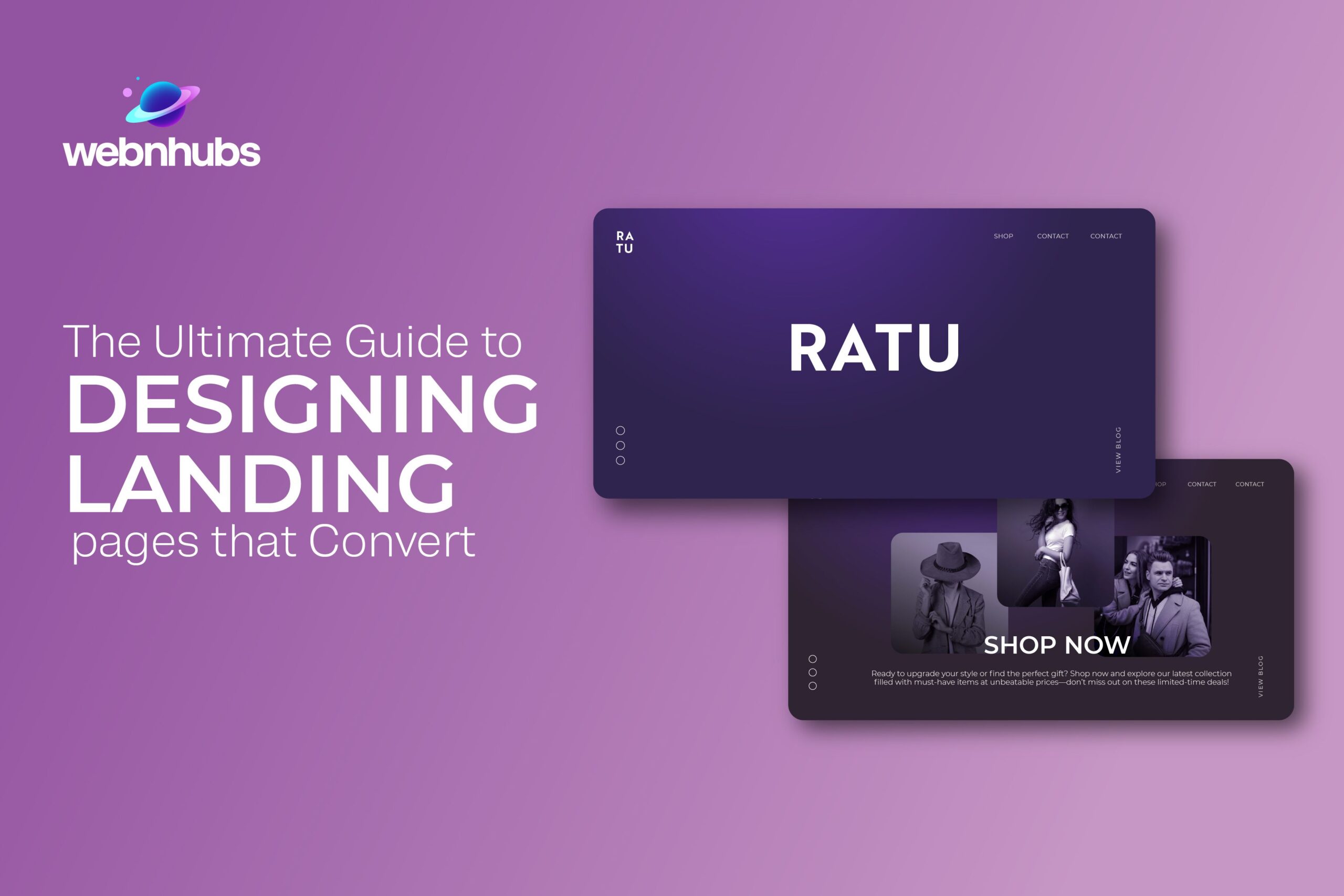
- What is a High-Converting Landing Page?
- Understanding What is a Landing Page
- Key Elements of a High-Converting Landing Page
- 1. Clear & Attention-Grabbing Headline
- 2. Focused and Concise Content
- 3. Minimal Distractions
- 4. Strong Call to Action
- 5. Simple Form
- 6. High-Quality Visuals
- 7. Social Proof and Trust Signals
- 8. A Mobile-Friendly Design
- Different Types of Landing Pages that Convert
- Text-Only Landing Pages
- Lead Generation Landing Pages
- Click-Through Landing Pages
- Long-Form Landing Pages
- Video Landing Pages
- What is the Average Conversion Rate for Landing Pages?
- Difference Between Landing Pages and Service Pages
All high converting websites have one common secret behind their success; a landing page. A landing page is what you build a campaign with, and it is where all roads lead to.
But have you ever wondered what is considered a good landing page? Is it the one that has striking visuals or is it a page that has been optimized to perfection?
While good looks do play their fair share of role in the success of a landing page, there’s more to it than visuals or optimization for that matter.
So, what makes a landing page tick and most importantly how can you create a landing page that you know, can convert?
To find out the answers, we will discuss all about landing pages in this blog. We will also list some examples, tools, and tips to help you create landing pages that convert.
So, without any further ado, let’s dive in.
What is a High-Converting Landing Page?
To put it simply, a high-converting landing page, as the name suggests, is a landing page that has a conversion rate that is higher than average.
A high-converting landing page is the pinnacle of a landing page as it has all the goodness and elements that get visitors to take the action you want them to take.
It is much better than an average landing page because it ticks all the boxes that help make it stand out. A high-converting landing page not only secures leads but also turns them into customers.
Want Landing Pages that Actually Convert?
Let Webnhubs Design High-Converting Landing Pages.
Understanding What is a Landing Page
As for the landing page itself, it is a focused, standalone web page. It is where your visitors land, hence the name, after they click on a link in an email, or an ad, whether a paid social ad or a paid search ad.
Landing pages are designed and created for just one specific purpose only, and that purpose is to drive a single action!
That action, more specifically a call to action (or CTA, for short), could be collecting an email sign-up, signing up for a newsletter, buying a product, encouraging a download, trialing software, booking a call, and whatnot.
At the end of it, a landing page removes all the distractions out of the way and guides a visitor to take the action you want them to take.
A high-converting landing page has a single focus or goal and it emphasizes one primary objective throughout the page. After all, focusing on one thing is what landing pages are created for.
This single focus is what makes landing pages the best pick for increasing the conversion rate of a marketing campaign. In the long run, landing pages serve as a better and cost-effective option for getting a lead or a sale.
This is why businesses focus heavily on landing pages and use them in marketing campaigns such as ads or email funnels.
Key Elements of a High-Converting Landing Page
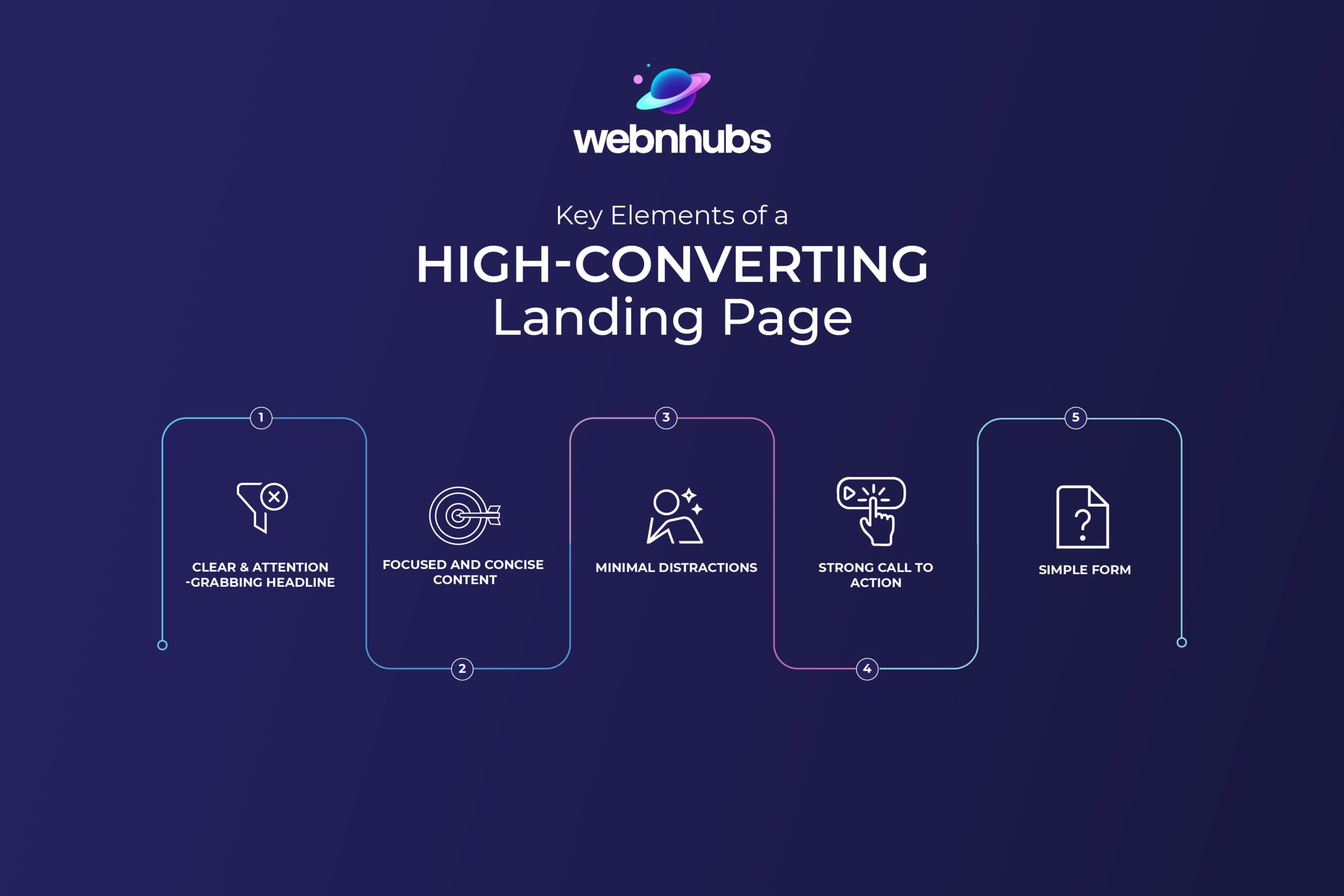
While everyone has their own formula for creating a high-converting landing page, at the heart of every landing page that converts are a few core elements. These key elements make a landing page tick and get users to take the action you want them to take.
At the end of the day, a landing page is all about driving conversions by guiding visitors to act in a certain way or take a specific action.
That is why each component of a landing page must be spot-on and work well with other components to achieve the end goal, which is to capture leads and get sales.
So, let’s take a look at what are the essential elements of a well-designed landing page:
1. Clear & Attention-Grabbing Headline
An eye-catching and attention-grabbing headline that is clear, short, impactful, and focused on the main offer. The headline should instantly explain the page’s purpose and deliver the value of the offer.
2. Focused and Concise Content
A persuasive copy and high-quality content that clearly explains the value of your offer. While you are at it, make sure your copy does that in a simple way so that it is easy to digest.
Your content should provide just about enough information to convince visitors to take action without fluffing around. More so, you must make sure your content is easy to read.
Your content should be formatted well for readability so that it can resonate with your target audience. You can use bullet points and keep paragraphs short to highlight the main benefits.
3. Minimal Distractions
Use the “Kill your darlings” approach and strip away anything that is unnecessary. Keep the landing page focused on the main objective.
Avoid adding unnecessary details, navigation menus, or links to other web pages that could distract or overwhelm the visitor.
The landing page’s entire design should center on your call to action to maximize conversions.
4. Strong Call to Action
A clear call to action (CTA)is what gets the job done. A CTA that is as clear as day will drive visitors to take action.
As per Statista’s Report “80 percent of French and UK websites of direct-to-consumer (D2C) brands used clear CTAs on their landing page. The CTA which is used for asking visitors to sign up for newsletters allowed these brands to engage with their users.”
Therefore, you must use direct and action-based CTA such as “Book a Meeting”, “Sign Up,” or “Download Now.”
Also, you must be very strategic in your CTA placement as you will need to repeat it multiples so that when users scroll, they are guided at every step to take action.
5. Simple Form
Forms that are simple and easy to fill are what get filled the most. Therefore, you must make sure your form is short and only requests the utmost vital information.
This way, your form will not feel like a hassle to fill for visitors. Your form must be placed above the form and should have a simple design with clear labels.
This will not only make it easy to use but will also increase conversions. More so, try using multiple forms to see which format works best for you and your audience.
6. High-Quality Visuals
A key element for a well-designed landing page that converts is visuals that are right on point.
You can use images or videos that are visually appealing, professional, and relevant to your offerings. It is safe to say a touch of visuals will add an element of beauty to your landing page.
Avoid using too many images or videos and don’t use the ones that distract visitors from the offer.
The right chosen visuals will enhance your page by endorsing its message and highlighting the main benefits in an attractive way.
7. Social Proof and Trust Signals
Your page must build trust and credibility with the visitor using client testimonials, reviews, and trust badges.
Feature customer experiences and success stories of recognizable brands to remove doubt and establish trust right out of the gate.
All of these will add an element of trust to your landing page that is needed to convince visitors to act.
8. A Mobile-Friendly Design
A landing page that is optimized for all devices is the one that converts the highest. Not every visitor is going to land on your landing page using a desktop or a laptop.
Therefore, you must design your landing page with mobile devices and tablets in mind. Use responsive layouts that adjust to all screen sizes.
Make sure your form and CTAs are easy to use on smaller devices so that you have a good chance of capturing leads from users of every device.
Different Types of Landing Pages that Convert
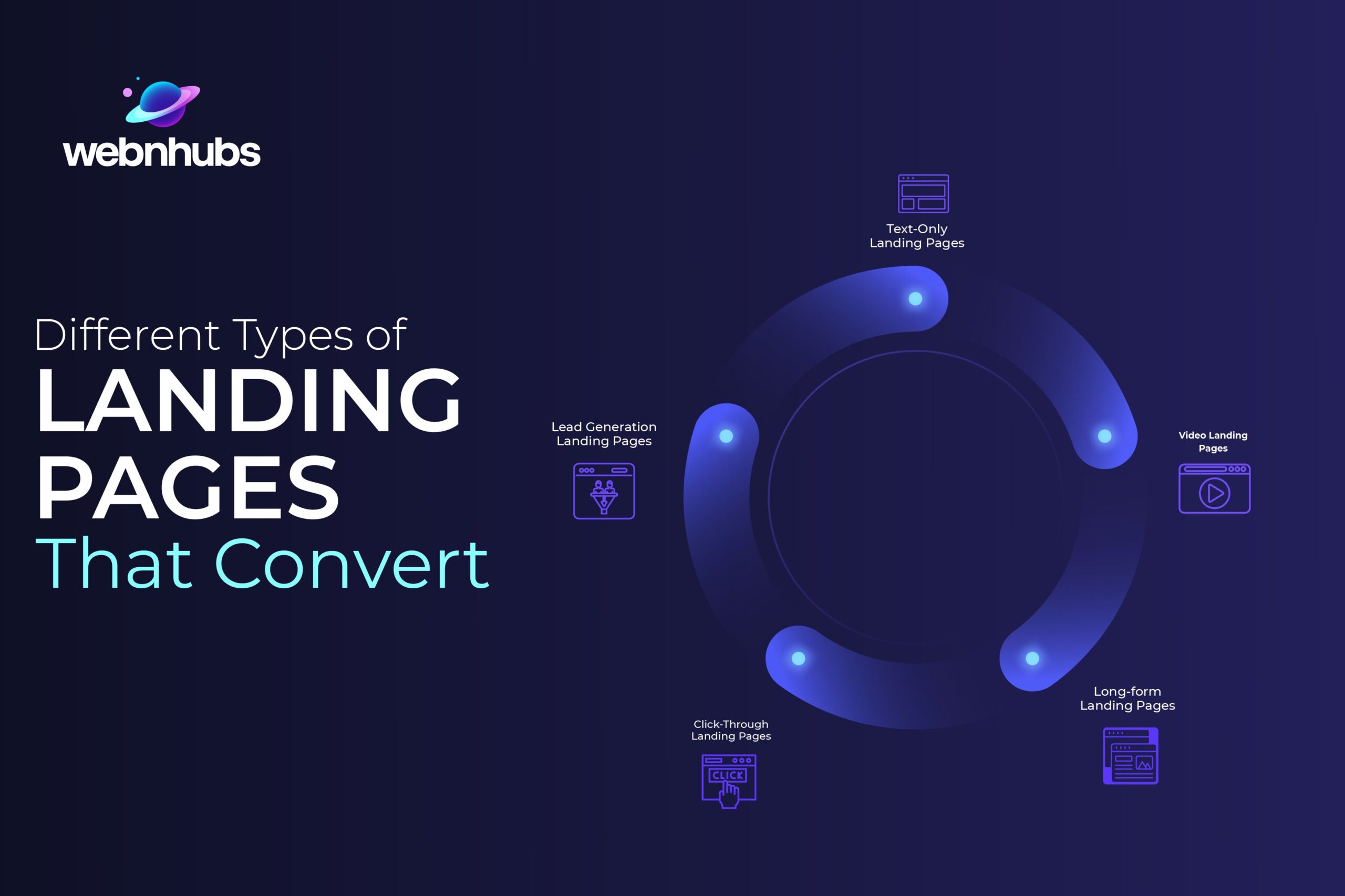
There are various types of landing pages that you can choose from to create your own landing page that converts. The options you have with the types of landing pages are as follows:
Text-Only Landing Pages
These landing pages are quite straightforward and they cut to the chase right out of the gate, without wasting any time whatsoever.
More so, they don’t have any real estate for heavy visuals as they do not include videos or images that are deemed too heavy for web pages.
They make do using only a couple of images to get the main sections filled and get the job done. These types of landing pages tend to use CTA buttons instead of a text link.
Lead Generation Landing Pages
The purpose of this landing page, as apparent by its name, is to only generate leads. It does so by collecting info like the visitor’s name, email address, phone number, and other contact details.
However, what might look like the bare minimum in terms of the efforts this type of landing page puts in is what actually proves to be the most effective.
The lead generation landing pages convert visitors from prospects to qualified leads. They do so by offering a free lead magnet, such as templates, demos, a short course, etc.
The design of these landing pages that convert is basic but effective. By aiming for simplicity, this landing page manages to strike it perfectly in terms of design.
It is in many ways free of all the clutteredness. This sets the stage perfectly to detail the information that matters the most.
Click-Through Landing Pages
A click-through landing page redirects visitors to another landing page. This type of page is used the most by eCommerce stores, and SaaS (software-as-a-service) websites.
Businesses that want visitors to go directly for sales or subscriptions use a click-through landing page.
This page usually has everything a “normal” landing page has such as a clear CTA, a compelling headline, and a catchy copy and content to convince readers.
This page with the CTA gets straight to business and sends visitors to the checkout flow, sign up for a demo, buy a product, or complete a transaction.
Long-Form Landing Pages
Not every landing page uses a short copy that cuts right to the chase. Some landing pages do use long-form content in their landing pages.
As long as the content is meaningful and adds value to the page without distracting the visitor, it’s welcome. The long-form landing pages are especially beneficial to highlight benefits for your offering whether a product or service to get the deal done.
However, just like a short copy, the headings for long-form landing pages use strong headlines and subheadings. The page lists benefits and features, showcasing images, reviews, and client testimonials.
It also features sections for portfolio and case studies as well as a message and video chat option, all while using several strong CTAs throughout the page.
Video Landing Pages
These types of landing pages use the charm of videos to work magic on visitors. Many businesses use the element of videos for their landing pages to engage visitors and keep them on the website for longer.
This, in turn, improves conversions and creates trust with the visitor. That is why, according to Statista’s Report “54% of businesses around the world used video on their corporate landing pages in 2020.”
Those numbers are from 2020, so, you can imagine the percentage of companies using video on their landing pages now.
More so, videos can show your product in action as well as demonstrate how it works. This is quite useful for websites that require users to follow a certain process to use a product or download software for that matter.
Above all, videos are entertaining and users love every minute of watching them. So, in all likelihood, video marketing will translate to an increase in web traffic, which is what you would want for your landing page.
What is the Average Conversion Rate for Landing Pages?
Knowing what a landing page brings to the table is vital for creating a landing page and expecting realistic results from it. That is why we must look at the average conversion rate for landing pages.
According to Unbounce’s Conversion Benchmark Report, “The average conversion rate for landing pages is 6.6% across all industry sectors.”
However, these conversion rates can vary based on the quality of the landing page as well as the industry sector it focuses on.
Ready to level up your landing page game?
Our Team Builds Conversion-Optimized Pages for Real Results.
Difference Between Landing Pages and Service Pages
If you are one of those people who used to think landing pages and service pages are the same thing, then don’t fret, you were not the only one to think that.
As a matter of fact, it is a lot more common as a lot of people confuse the two and think of them as one thing.
But now as you have come to know, landing pages and service pages are completely different things.
But really, how does one differentiate itself from the other? It is important to know the differences between creating a landing page that is structured like a landing page instead of a service page.
Otherwise, you can say hello to lost opportunities. So, to avoid that let’s break down the differences between the two in different aspects:
Purposes:
- Landing Page: Focuses on driving action from visitors using CTAs like “Sign Up” or “Download Now.” It has a single primary objective and is used for short-term marketing campaigns.
- Service Page: Provides information about your services and solutions. It aims to create a business relationship with the visitor by building trust and making the visitor explore more about your company.
Audience:
- Landing Page: Focuses on a specific audience. It is visited by users clicking on a link in an email or a paid ad.
- Service Page: Targets people researching for services. It is designed for all types of audiences visiting your site.
Content:
- Landing Page: Uses a copy that is short, concise, clear, and easy to read. Provides just about enough information to drive users to take action.
- Service Page: Uses a detailed content format that lists down benefits of the services. It features sections like client testimonials, case studies, and industries targeted to educate visitors about the service.
Design:
- Landing Page: Has a simple format that is straight to the point with a single focus on conversion. It uses focused CTAs and has no navigation or other links to avoid distractions.
- Service Page: Uses different CTAs and has multiple links relating to other services. It works as a part of your website navigation.
Here’s a recap of all the differences between the two we discussed above and more:
| Aspect | Landing Page | Service Page |
| Purpose | Drive visitors to take action using (CTA) | Educate about service and build relationships with customer |
| Audience | Specific and targeted audience | General audience |
| Content | Short and concise copy that drives visitors to act | Informative content that details benefits and builds trust |
| CTAs | Specific CTAs driving single action | Different CTAs driving different actions |
| Navigation | Standalone with no navigation links | Part of website navigation |
How are SEO Landing Pages Different from Campaign Landing Pages?
We compare landing pages with services, and now is the time to stack SEO landing pages up against campaign landing pages.
Unlike the comparison of landing pages and service pages above, there is very little difference between campaign landing pages and SEO landing pages.
Before we start to confuse you further, let’s discuss what campaign landing pages are. For starters, these are landing pages that are designed for a specific product or marketing campaign.
The mission here is to drive traffic as quickly as possible. And it is done so using paid means such as paid advertising.
On the other hand, a regular landing page is used for multiple and different campaigns. The traffic for a landing page is gained through organic ways such as optimizing the page for SEO.
A landing page that is optimized for SEO drives organic traffic and is most of the time created for the long run. It keeps bringing in traffic from search engines with ongoing optimization.
SEO landing pages provide results that benefit a business in the long term whereas a campaign landing page is used to get immediate results for a specific campaign.
How to Create Impactful Landing Pages That Convert
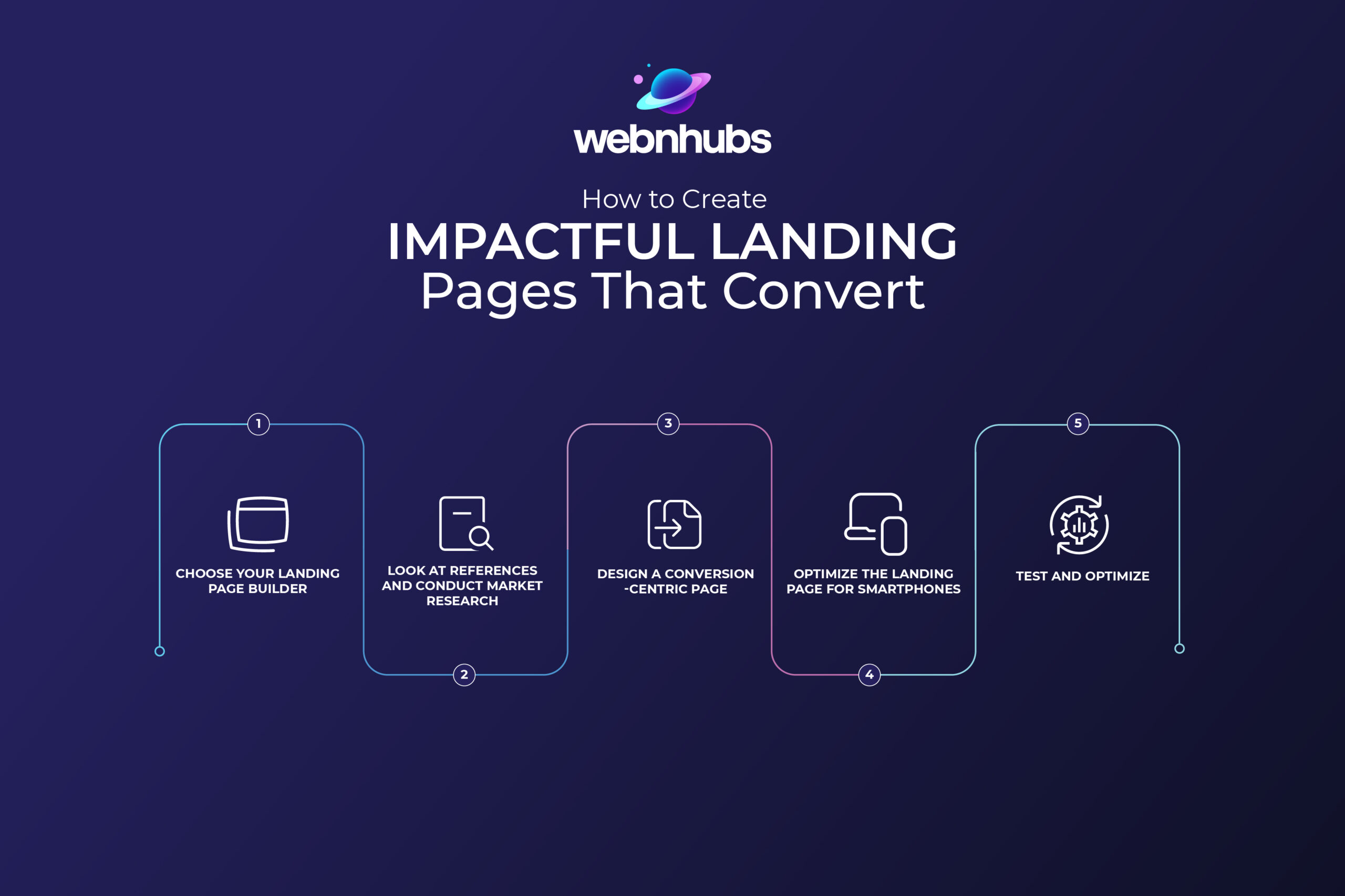
Now that we have discussed all the ins and outs of landing pages that convert, it’s about time to get down to the business end of things and finally talk about how to create a high-converting landing page.
As it has been the theme of this blog so far, we will keep this bit short and right to the point. As for the steps to create a landing page, we will narrow them down to five key steps.
You can follow these steps one by one to create your very own landing page. So, let’s begin.
Step 1: Choose Your Landing Page Builder
If you know how to code and have the web design ideas and skills to build a landing page from the ground, then great!
But if not, you can let the landing page builder do all the heavy lifting. Trust us when we say this, you are going to want to use a landing page builder on this one.
You will thank us later for this piece of advice as it will make your life so much easier. With a landing page builder, you do not need to have coding or designing skills.
That is because you can make do with simple drag-and-drop features to create landing pages that convert.
So, now that we got that out the way, it’s time to pick a landing page builder. There are a lot of landing page builder options available.
Some of the best options for landing page builders include Unbounce, OptimizePress, PopUpDomination, OptinMonster, Instapage, Leadpages, and Getresponse.
With so many options at your disposal, you can choose the landing page builder that meets your needs and suits your liking the best.
Step 2: Look at References and Conduct Market Research
The next step is to look at references and conduct a thorough market research. There is no such thing as “too much research!”
That is because the more you research about something and the deeper you get into it, the more there is left to explore, no pun intended!
The same goes for researching when creating landing pages that convert. Go look at other landing pages for ideas and references. There is a sea of websites with countless landing pages.
Go look at some of the best landing page examples. Pick up ideas on design, formatting, and how well the content is written. Use these inspirations to create your own landing page strategy.
Also, research the market to understand your target audience. This way, you can create value for your customers and a positive experience for them.
Look at the market for the latest trends, spot pain points, and find out the design and content gaps in competitors that you can fill with your landing page. Set prices for your product that leave the competition behind, and make movies that make you stand out.
Research keywords, both short-tail keywords and long-tail keywords and use them in your content to leave your competitors in the dust.
The opportunities that research presents are endless, so get creative and get going with your time and skills to create a growth strategy.
Step 3: Design a Conversion-Centric Page
When designing landing pages, keep conversion in mind at all times. And not just mind, make it the center of attention of your page. Design your entire landing page around conversions. To create landing pages that convert;
- Use a clear call-to-action button in red or another striking color. Make sure the text you use for CTAs is as simple as possible, like “Buy Now”, or “Schedule a Call Now.”
- Use the right visuals by selecting professional and visually appealing images and videos. Add videos to showcase your product in action.
- Add client testimonials and reviews. Use trust badges, awards, and client success stories to build trust and credibility with the visitor.
- Proofread your content and make grammatical corrections before publishing. Make sure your content is grammatically sound and looks professional.
- Add an eye-catching and attention-grabbing headline. Make sure the headline is clear, short, creative, and bold. Your headline needs to be benefit-driven and provide a solution to the visitor’s problems. It must let visitors know the purpose of the page right out of the gate.
- Carry in the same vein and continue with the subheadlines. Keep them direct and right to the point.
Step 4: Optimize the Landing Page for Smartphones
Do you know that landing pages that convert are the ones that have been optimized for mobile? That is why ensuring mobile-friendliness is key to creating a high-converting landing page.
After all, more than 77% of the retail web traffic comes from mobile. Thanks to mobiles, eCommerce stores get two-thirds of online shopping orders.
So, it goes without saying how vital ensuring a mobile-friendly experience is for creating landing pages that convert. You will need to design your page for all types of devices, whether small or big.
Use responsive web layouts so that your landing page can adjust on small screens. More so, do not clutter your landing page, and make sure the page is easy to see and read on smaller devices.
Prioritize fast loading times and add navigation for the home page and a drop-down menu on every page.
Add a Google Sign-in to collect data as nothing is more convenient than a simple “Sign In With Google” button to get things underway.
Step 5: Test and Optimize
When it comes to martial arts or any other skill for that matter, practice makes perfect. But in the case of creating landing pages that convert, testing makes perfect. So, once you are done with everything, you will need to sit back and see your creation yourself for imperfections.
Not only that, but you will need to test your landing page on every piece of device you can get your hands on. More so, you will need to test and compare page variations so that you can optimize your landing page to perfection.
Look closely at real-time stats and see which design and format work the best and convert the most. This way, you can have a blueprint to create your next landing page.
Conduct A/B testing, use different color variations for the CTA button, try out different types of forms, change content formatting, and add new images and videos.
Do all this for a week or two and see how it plays out. Once you have the metrics at your hand like conversion rates and engagement rates, then you can make the final decision based on data.
You can use A/B testing tools for all that such as HotJar, Optimzely, and Crazy Egg. Once you are done testing, you can implement your final version. Happy converting!
Some Best Practices for Optimizing Landing Pages That Convert
We are not leaving you stranded in the desert by just telling you steps, but we are also going to give you a few tips as well.
These tips are industry-proven best practices that every marketer follows. If you see landing pages that convert or a page that ranks on top, don’t think for a second it is successful by chance.
Nope, it is a result of thoughtful planning and following the best practices. That is why we will be listing some best practices and tips to create landing pages that convert as well as attract and engage visitors.
So, other than a few general best practices, these tips landing page are going to be in terms of design best practices, copywriting best practices, and SEO best practices. You can use these best practices to optimize landing pages that convert.
So, here goes nothing:
Key Landing Page Optimization Best Practices:
- Define a Clear Goal for Your Landing Page: Be specific with your goal and structure your page’s content and design based on your purpose.
- Know Your Audience: Know the audience you are targeting, their problems, what they want and how can your product or service provide a solution to their problem. Create content that connects and addresses the needs of your customers.
- Provide a Value With Your Offer: Describe what your offer is and make it the centerpiece of your landing page. Be specific with your offer and highlight its benefits to provide a clear value using concise and impactful content.
- A/B Testing and Optimization: Test and optimize your landing page using A/B testing tools. Test headlines, CTA buttons, content formats, and color. Find which version works the best with your audience and keep improving your page.
- Implement SEO Best Practices: SEO is your landing page’s best friend. So, keep researching keywords and finding user intent to keep your page optimized with SEO.
- Keep a Single Focus: Have a clear, and narrow single focus for your landing page. Focus on your primary objective to drive visitors to take action.
Design Best Practices:
- Keep it Simple: Use the right types of designs for your landing page. Use a clean user interface and layout with a user-friendly navigation that is free of clutter.
- Focus on the CTA: Design the landing page with conversions in mind and keep it centric on your offer.
- Avoid Distractions: Include only vital information and images. Move unnecessary information to the “About” section.
- Mobile-Friendly Layout: Use a mobile-friendly and responsive layout to accommodate visitors on all devices and screen sizes.
- Use the Right CTA Colors: Choose your CTA’s color wisely. Look at color psychology to select colors that drive actions from visitors.
- Add Link Color: Avoid adding links but if needed, you can add links with colors. Choose blue color for underlined links and for followed links, use maroon color.
- Use Clean Fonts: Choose fonts for your landing page that look clean and professional. Avoid distractions with your content.
Copywriting Best Practices:
- Write High-Quality Content: Make sure your copy and content are clear, easy to read, and aligned with your brand voice. Use the right heading formatting, and keep paragraphs short to make the content more readable. Add bullet points to highlight features.
- Focus on Very Important Attributes (VIA): Be specific with your Very Important Attributes (VIA). Add less than five key features. Highlight benefits, and pain points on the front page.
- Go the (A.I.D.A) Content Strategy: When creating content, use the attention, interest, desire, and action (A.I.D.A) approach. Capture attention with copy and images, develop interest with offers, create desire with perks, and get action with CTA.
- Strip Away the Unnecessary: Leave any content, images, or sections out that do not provide value or distract visitors.
SEO Best Practices:
- Add Keywords and LSI: Use primary keywords in your title, H1 heading, and content body. Use secondary keywords and latent semantic intents (LSIs) in your content body and H2 and H3 headings.
- Use Right Heading Structure: Follow the recommended heading structure for your H1, H2, H3, and H4 headings. This will make it easier for search engines to go through your content and help it rank on SERPs.
- Add Meta Tags: Use Meta Text for your landing page to help search engines understand it.
- Use Alt Text: Add Alt text to your images for SEO optimization, screen readers, and accessibility.
- Use Local Keywords: Target local audience and drive traffic from nearby locations using local keywords.
How to Drive Traffic to Your Landing Pages
You have created your landing page, but now you are left with the task of bringing in traffic. Well luckily for you, there are four ways you can go about bringing traffic to your landing page.
Landing pages that convert are the ones with higher traffic. So, let’s look at the ways you can drive traffic to your page.
Organic Search Traffic
The best and the future-proof method to bring traffic is through organic means. It will help your website in the long run.
This method is done using solely high-quality content, following SEO best practices, and optimizing your page to perfection.
And the best part about it, you do not need to pay anything for it other than a few SEO tools, if you need them. And even then you can make do with the free ones.
Paid Search Traffic
This method uses money to gain leverage and rank on top of search engine result pages (SERPs).
Paid advertising is used by many websites to get featured in the sponsored section and get an instant boost in traffic.
However, apart from the money, pay-per-click ads need preparation with the right copy, keywords, and an informed, thoughtfully planned campaign.
Paid Social Traffic
The other way to get traffic on landing pages is through social media channels. You can run ads on social media platforms such as Facebook, Instagram, Twitter, YouTube, and LinkedIn to drive audiences from these platforms.
However, you need to be mindful of the platform and the communities you are targeting to run the paid social media ad campaign.
Email Campaigns
Last but not least is email campaigns. While this method might be becoming old with time, it is still a pretty effective marketing channel to this day.
Out of the two paid methods, this one is the cheapest and has a great reach as well. All it needs is to create the right email template and a list of contacts with tools like Mailchimp.
The emails do all the magic and bring the visitors to the landing page, from where your landing page takes over the responsibility and drives visitors to fill out forms and take action with direct and clear CTAs.
Need High Conversion Rates?
Webnhubs Creates Landing Pages that Turn Clicks into Customers.
Best Examples of High-Converting Landing Pages
Now that we are pretty much done here, all that is left to do is look at some high converting landing page examples so that you can use them as inspiration for your landing page.
We have picked out 4 great landing page examples that we think really tick all the boxes and have all the key elements we discuss above to make a landing page stand out.
edX
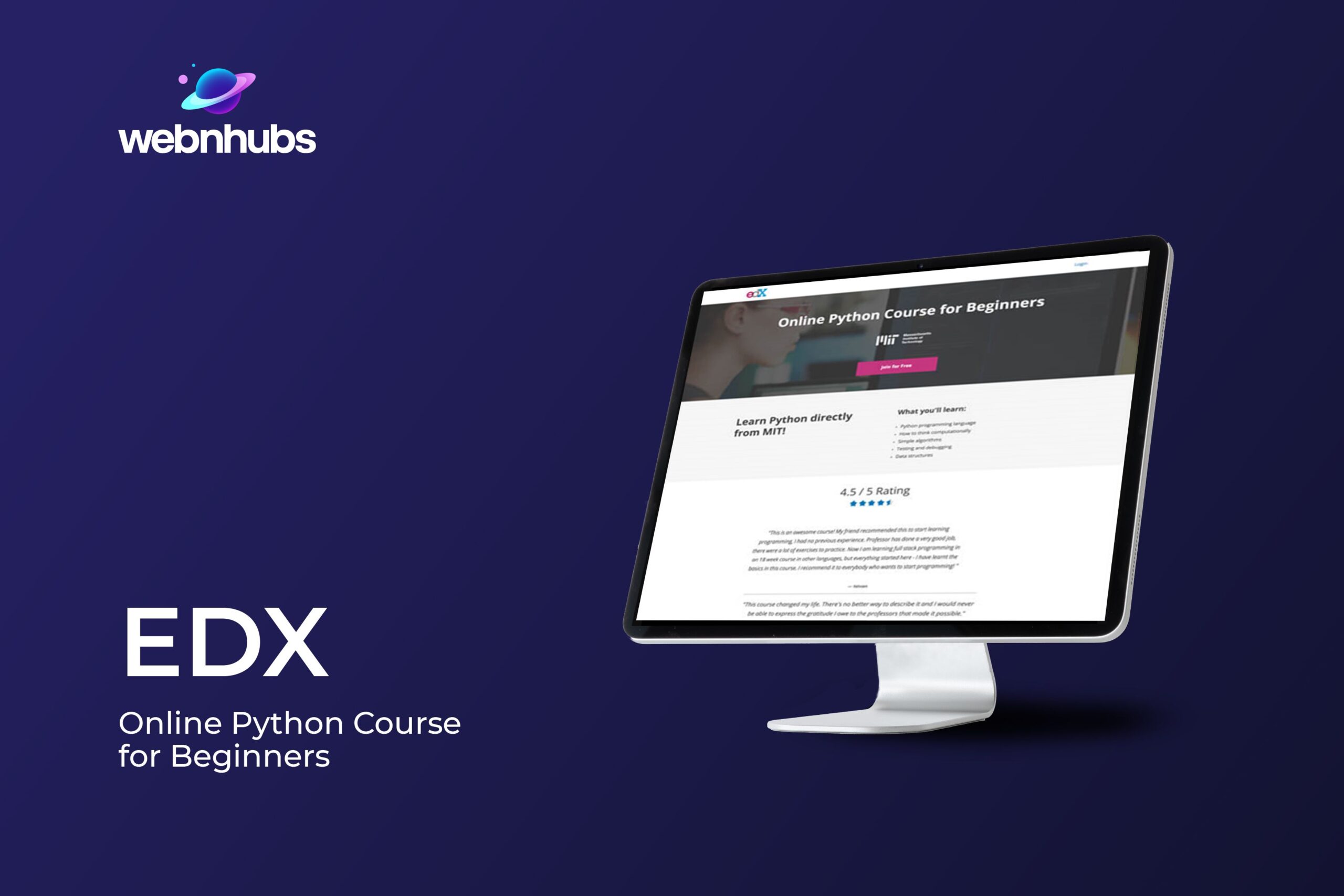
The first landing page we have picked out is that of edX’s. edX is an online learning platform and its landing page has a conversion rate of 52.68%.
When speaking of high conversion examples of landing pages, this one takes the cake. This landing page features a simple pitch and benefits that are laid out clearly and perfectly.
More so, the page uses just about bullet points to really steal the show with simplicity and clear content.
Uber
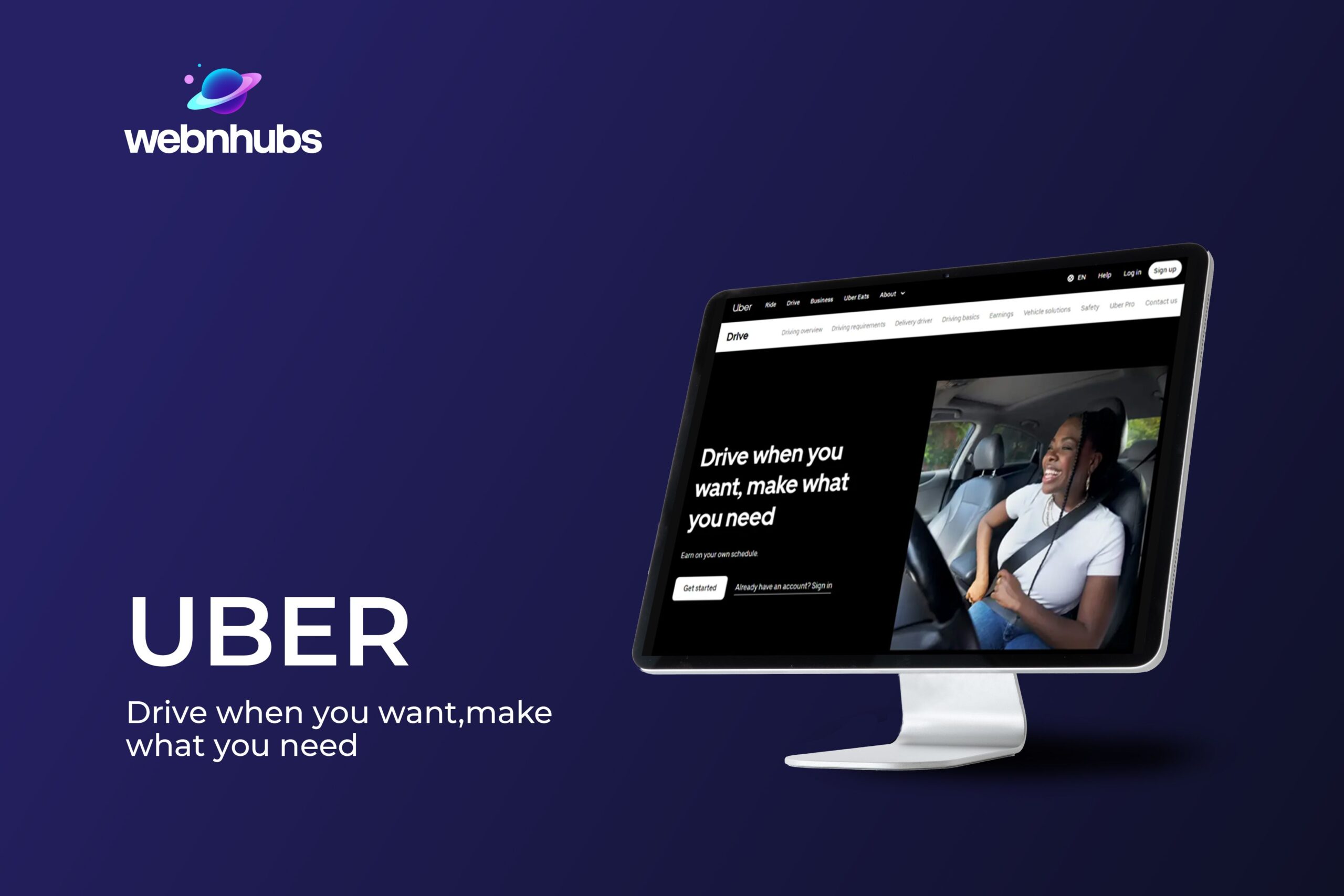
The second landing page that we really look up to and are in awe of is Uber’s landing page. They have one of the best landing pages that convert.
That is because they are direct and clear with their stuff, they use simple headlines. Their subheading grabs the attention right out of the gate.
More so, they do not wait for anyone to lay out the benefits that a person can get by working as a driver for Uber. A format that is clean, creative, and works like a charm.
MyTutor
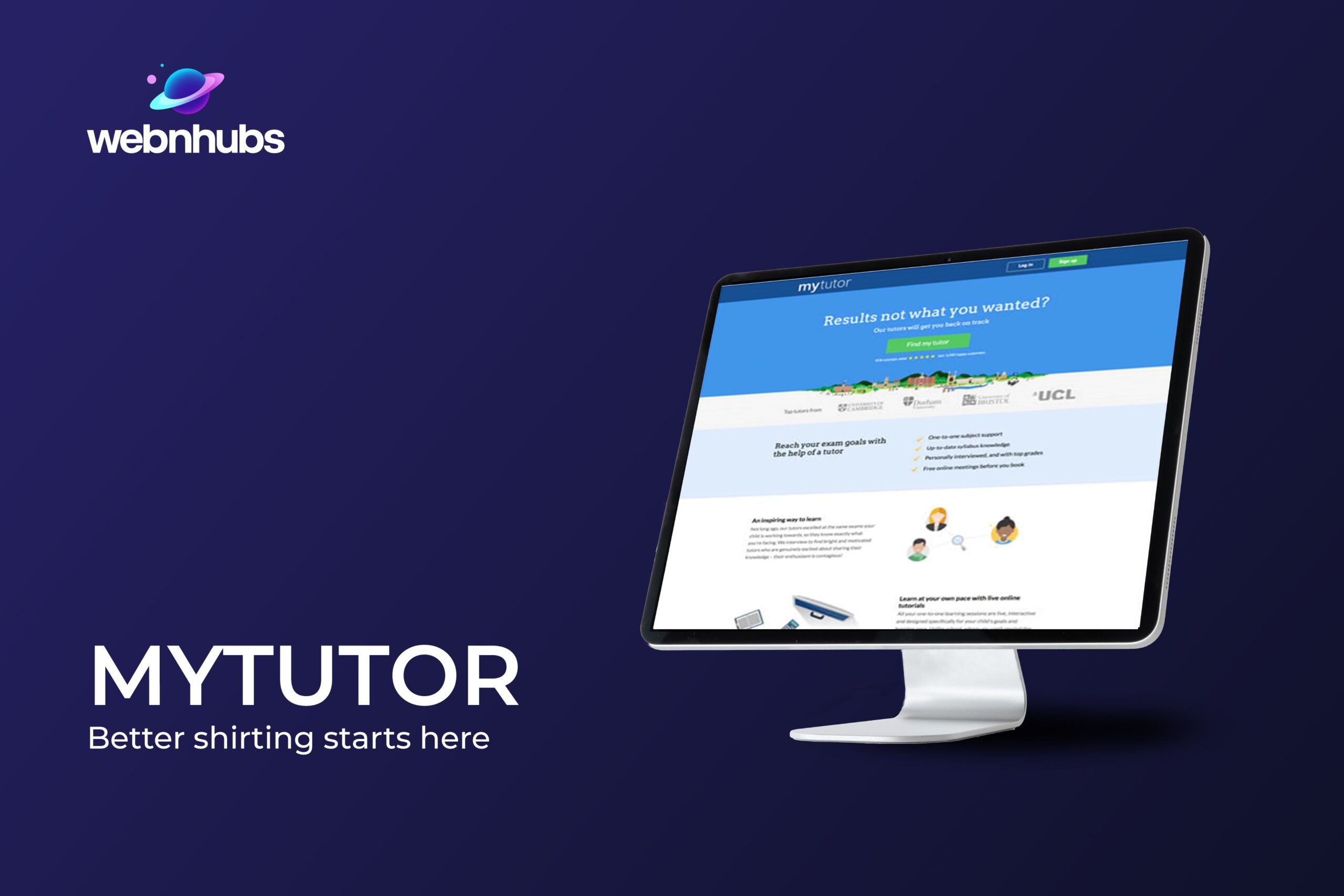
Yet another education landing page that nails the structure and is a solid candidate for the best landing page examples is MyTutor’s landing page. This one is also pretty high in conversion rates with racking up a conversion rate of 55.29%. It uses a simple but effective truck on visitors: present the right offer to the right people at the right time using the right copy. That many rights leave no room for wrongs. And we must hand it to their marketing team for getting everything on point, from content to targeting the audience and writing a pitch that works magic on readers.
Twillory
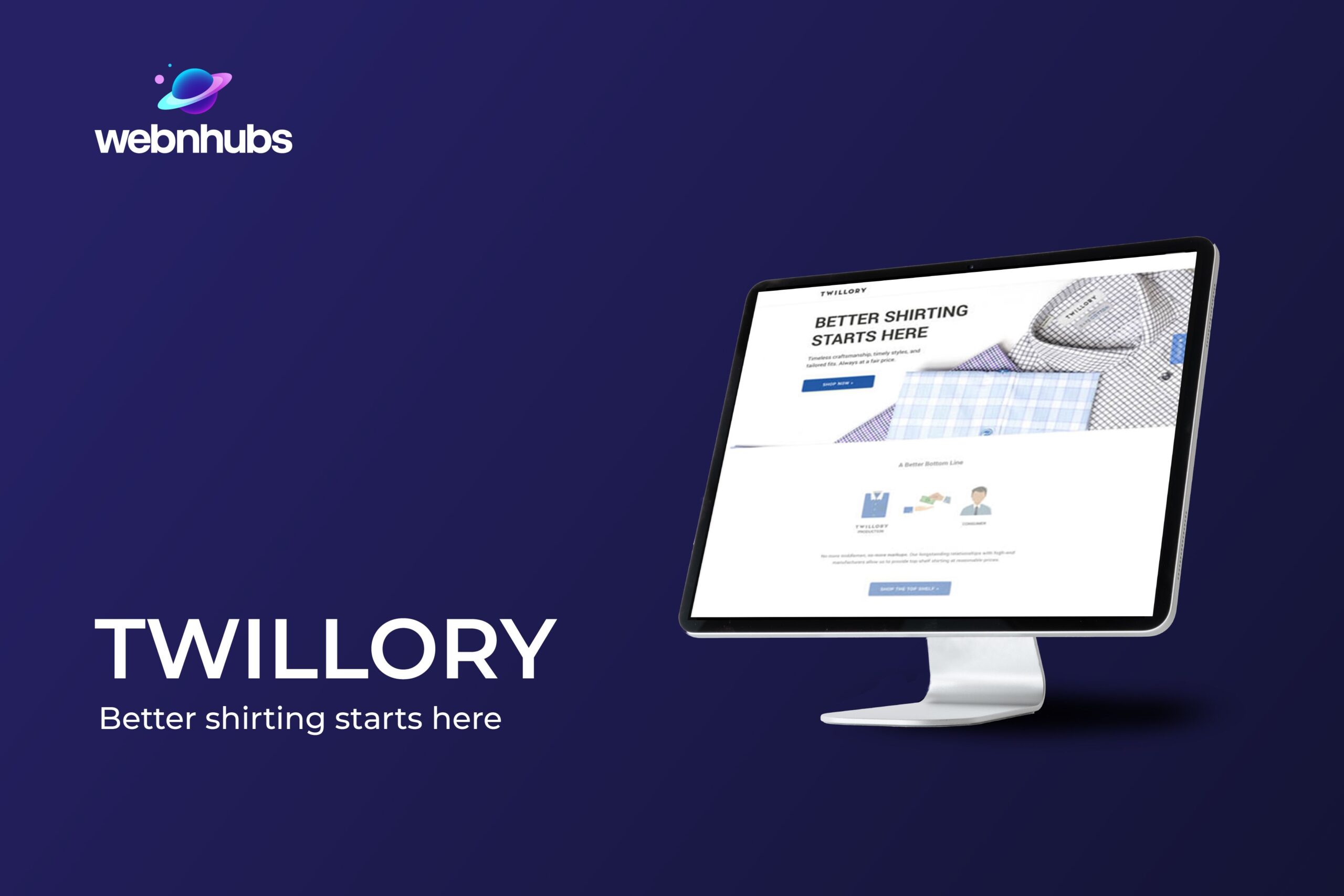
The final and one of the best high converting landing page examples is Twillory’s landing page. Being a clothing business, this landing page works wonders in terms of design and it truly does justice to the fashion industry.
More so, this landing page takes the whole “prioritize mobile-friendliness” to a whole new level. By targeting users on mobile devices, it is no wonder this landing page has received the success that it has. It is one of those landing pages that convert and look well at the same time.
Why Choose Webnhubs to Create Landing Pages That Convert?
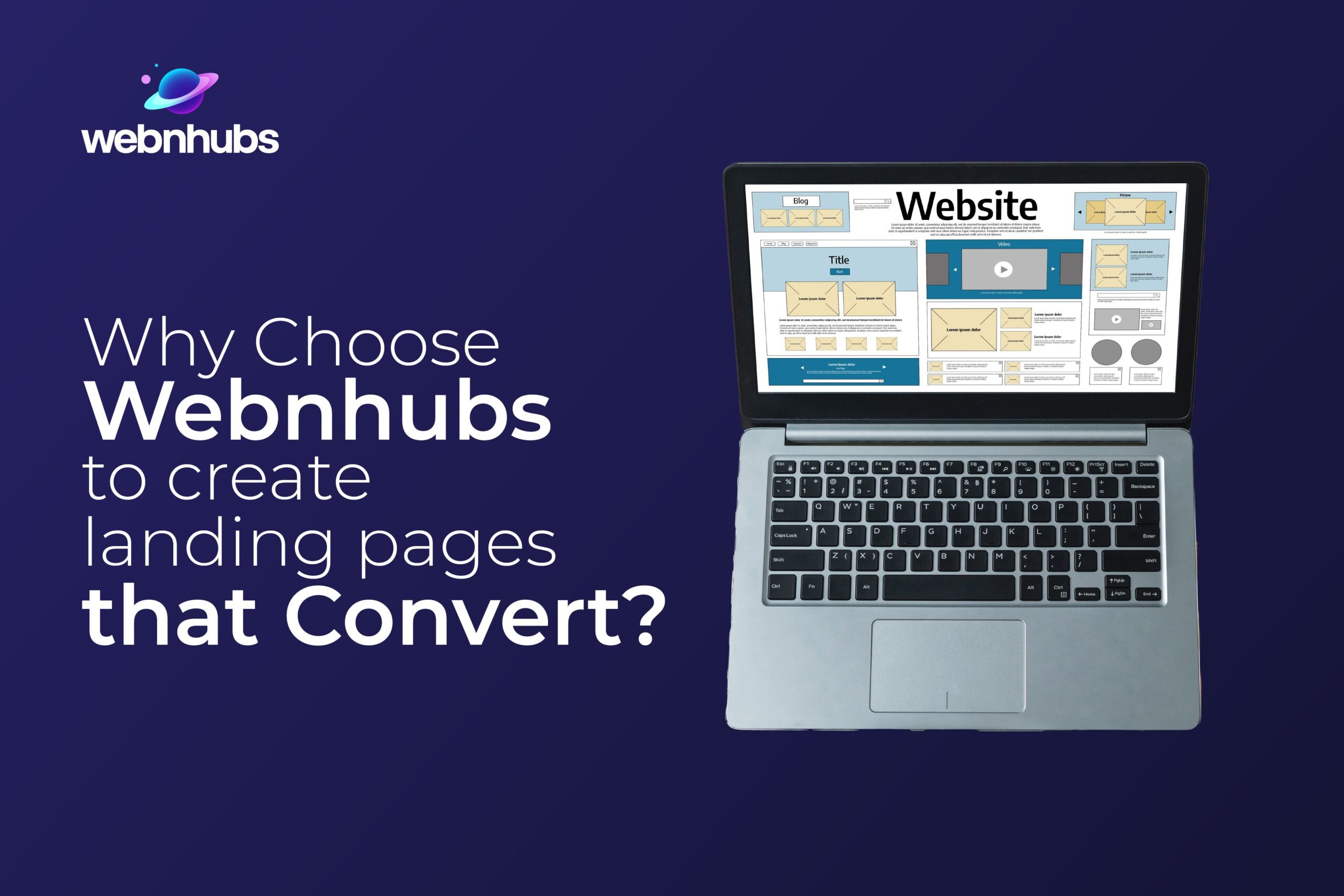
We understand not everyone has the time, skills, or other resources to create a landing page that converts.
That is why being a marketing expert and a professional web design and development company, Webnhubs is offering landing page services to businesses.
We want to help businesses of all sizes, whether startups or enterprises, create a landing page that can convert and get sales.
Knowing the things we know, such as SEO best practices, industry trends, design principles, and content understanding, we will create landing pages that deliver results right from the start.
More so, our marketing experience and expertise allow us to make bold claims that we back up with our work.
It is one of the reasons why we have a successful track record of helping businesses in their marketing endeavors.
So, if you want to use marketing campaigns and use the power of landing pages, you can partner up with Webnhubs.
Closing It
That is, it for this blog on creating landing pages that convert. We hope the tips, best practices, and steps we featured in this guide can help you create a high-converting landing page for your business. More so, we listed the key elements that make a landing page tick and you will need to add these elements to make your landing page a great one.
We have also shared some of the best landing page examples that you can look at and take inspiration for your own landing page. However, if you need a helping hand from an expert, you can partner with Webnhubs to help you create a landing page for your business.
Frequently Asked Questions
A landing page can be improved by just writing a clear headline and concise copy with a strong CTA. The page must have fast loading times. Make your landing page mobile-friendly and add high-quality images and videos while removing distractions from the UI.
Landing page costs depend on functionality and design requirements. Basic pages typically start at $100-$300. Advanced pages with high-quality copy can go up to $2000 or even more. Costs depend on whether one hires a freelancer, partners with a firm, or uses a landing page builder.
Having a domain of your own isn’t necessary yet it lends credibility and an air of professionalism. Some landing page builders provide hosted options under subdomains but opting for a custom domain boosts branding, SEO, and user confidence for businesses
Not really as long as each landing page serves a distinct audience segment or unique purpose. Multiple targeted landing pages usually boost conversions. Maintaining quality, relevance, and organization is crucial so pages stay effective and don’t end up overwhelming the overall marketing strategy.
Landing page length varies depending on specific goals, audience dynamics, and the nature of the offer being presented. Short pages work well for simple CTAs while long pages work well for products and services. Provide just enough info to convince visitors without distracting them with too many details.
